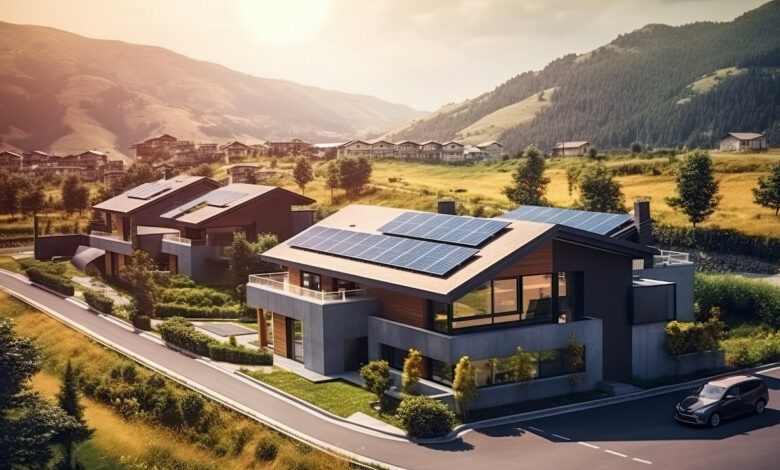Energy Performance of Building Directive: there is an agreement

The next step will be formal adoption in early 2024, by the European Parliament and the Council
An agreement has finally been reached on the revision of the Energy Performance of Building Directive,(EPBD). The last Trialogue agreed with the Commission, the European Parliament and the Council in their shared effort to decarbonize the Community building stock by 2050.
Energy Performance of Building Directive
Compared to its initial version, the text that comes out of the meeting is much less rigid, defining stakes for each Member State no longer based on individual buildings, but based on the average of the real estate. Priority must always be given to the worst-performing buildings, but Member States will be free to choose the buildings to be used and the measures to be taken.
The first goal required by the Energy Performance of Building Directive is the adoption of a national trajectory to reduce the average primary energy consumption of residential buildings by 16% by 2030 and 20-22% by 2035, with sufficient flexibility in national circumstances.
The measures should ensure that at least 55% of the decrease in average primary energy consumption is achieved through the renovation of buildings with worse performance. The non-residential housing stock will be subject to gradual improvements through the establishment of minimum energy performance standards. By 2030 at least 16% of the worst-performing buildings will have to be renovated, rising to 26% by 2033.
As in its initial version, the EPBD Directive will provide exemptions for particular types of properties such as historic buildings or holiday homes. A key point in the review is the objective of improving energy performance certificates (EPAs) by developing them according to a common European model with shared criteria. This will enable citizens to be better informed, and will also facilitate decisions on European funding.
Green loans to combat energy poverty
To fight energy poverty and bring down energy bills, financing measures will have to incentivise and accompany renovations and be targeted in particular at vulnerable customers and worst-performing buildings, in which a higher share of energy-poor households live.
In addition, each Member State will need to ensure that safeguards for tenants are properly applied to help address the risk of the eviction of vulnerable households caused by disproportionate increases in rents as a result of restructuring.
The objective of the EPBD Directive
According to the revision of the Energy Performance of Buildings Directive, each Member State shall establish:
- National Building Renovation Plans to define the national strategy for decarbonizing the housing stock and addressing remaining obstacles, including funding, training, and attracting more skilled workers;
- establishing national passport systems for the renovation of buildings to guide owners to phase-in renovation to achieve zero-emission buildings;
- establish one-stop shops for homeowners, SMEs and all actors in the value chain of renovations, so that they receive specific and independent support and guidance.
Phase-out boilers powered by fossil fuels
The most discussed element is the one related to fossil fuel-fired boilers. From 1 January 2025, subsidies for the installation of autonomous fossil-fired boilers will no longer be allowed. The final goal of the Green Houses Directive will be to achieve by 2040 the complete elimination of boilers powered by fossil fuels. To this end, each Member State will be called upon to define specific measures for the decarbonization of heating and cooling, through requirements for heat generators based on greenhouse gas emissions, fuel type, or minimum share of renewable energy used for heating.
Boosting sustainable mobility
The text confirms the encouragement of sustainable mobility through the pre-wiring in the renovated buildings of charging points for electric vehicles and bicycle parking. The Member States will have to remove any obstacles that prevent the “right to connection” from becoming a reality.
A zero emissions standard for new buildings
Zero-emission buildings will no longer be the exception, but the norm. For new buildings owned by the public, residential and not the zero-emission requirement of fossil fuels on-site, takes off from 1 January 2028. For all other buildings, the obligation will start from 1 January 2030.
Member States will also have to ensure that new buildings are solar-ready, meaning that they have to be fit to host rooftop photovoltaic or solar thermal installations. Installing solar energy installations will become the norm for new buildings. For existing public and non-residential buildings solar will need to be gradually installed, starting from 2027, where this is technically, economically and functionally feasible. Such provisions will come into force at different points in time depending on the building type and size.
The advantages of the massive restructuring of the European heritage
As expected, the new softened version of the Energy Performance of Building Directive does not satisfy everyone. The main criticism levelled at the text is above all the risk of not achieving total decarbonisation by 2050, without precise and uniform regulation.
However, the objective remains to improve the condition of the European housing stock, 35% of which consists of buildings over 50 years old and 75% of which are energy-inefficient buildings. Increasing the average rate of restructuring, which is currently only 1% per year, would also produce significant economic value. Today, the EU construction sector contributes about 9.6% of EU value added and employs almost 25 million people in 5.3 million companies. Increasing restructuring would benefit small and medium-sized enterprises (SMEs) in particular, since they account for 99% of EU construction companies and 90% of employment in the sector.
“Improving the energy performance of buildings is vital for reaching our ambition of climate-neutrality and will bring concrete benefits to our citizens. Renovations are investments into a better future. They will improve quality of life, allow people to invest their savings elsewhere, and boost our economy. I trust this agreement will allow to spur a renovation wave across the whole Union, while respecting the diversity of the EU’s building stock“, said Kadri Simson, Commissioner for Energy.





